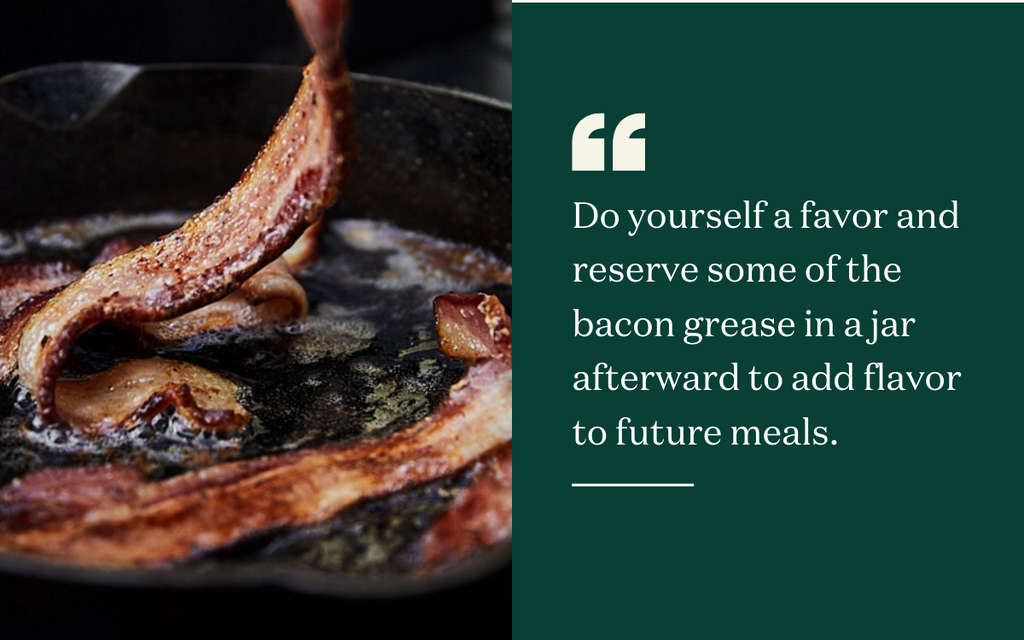Yet, while any bacon is better than no bacon, we also know that not all bacon is created equal. In order to enjoy truly exceptional bacon you need two things: high-quality, thick cut strips and a foolproof crispy cooking method. And you’re in luck, because today’s post shares a method that is so foolproof, we’re willing to call it the definitive guide.
Just follow these few chef-approved steps, and you’ll be dishing out impeccably crispy strips in no time:
-
Place thick-cut bacon onto a rimmed sheet pan. Avoid overlapping strips as much as possible. We recommend a pack of our thick-cut Berkshire pork bacon (you’ll thank us later).
-
Put the pan on the middle rack of a cold oven — yes, you read that correctly: a cold oven. This allows the bacon to cook slowly and minimizes curling (we’ve all been there).
-
Turn the oven on and set the temperature to 425 degrees F. Set a timer for 30 minutes. (As a note, you’ll need to set a separate timer than the one on your oven, since oven timers generally only start once an oven is preheated.)
-
When the timer goes off, turn off the oven immediately, but leave the bacon inside with the door closed for an additional 10 minutes.
-
After 10 minutes has passed, remove the bacon from the oven and transfer to a paper towel-lined plate. Enjoy!
It’s as easy as that: hands-free, foolproof crispy bacon, with less stovetop mess and grease stains on your favorite white t-shirt (speaking from previous trauma).
However, if you have a strong preference for bacon cooked in a sauté pan, we do have a few tips to master that method, too.
First, make sure you always use a non-stick pan. Second, consider cutting the bacon in half, or to a size that will allow it to easily fit in the pan. You’re going to want to get the pan pretty hot—medium-high heat is best. In order to prevent curling, apply weight to the bacon as it cooks, but make sure you’re also turning it frequently. Remove to a paper towel-lined plate once it reaches your desired crispiness.

Bonus tidbit: one of the things that makes bacon so darn delicious is that it cooks in its own fat, so don’t let this excess grease go to waste. It might seem gross, but as any seasoned home chef knows–leftover bacon lard is liquid gold. So the next time you practice the cooking steps above, do yourself a favor afterward and reserve some of the drippings in a jar to add flavor to future meals when cooking.
For instance, if you’ve never tried potato salad made with bacon grease, you simply haven’t lived.
Hungry yet? Try the best bacon around.










